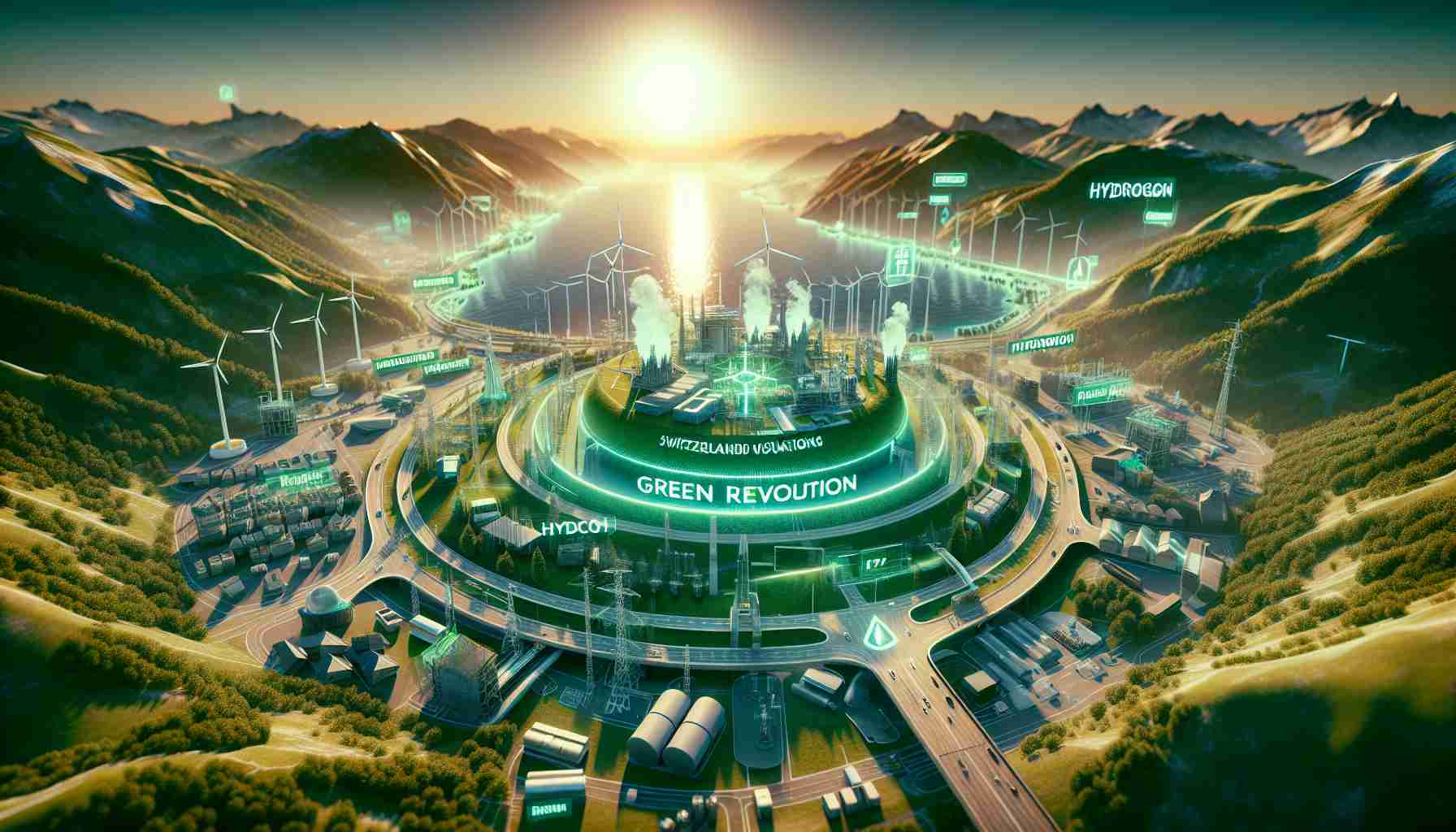The Future of Hydrogen in Switzerland
Switzerland is stepping into a sustainable future with its recently adopted national hydrogen strategy, unveiled on December 13, 2024. This comprehensive plan outlines the goals for hydrogen and power-to-x (PtX) derivatives, focusing on fostering a robust domestic hydrogen market while enhancing connections to Europe.
The Federal Council’s strategy, crafted with contributions from various stakeholders, anticipates low hydrogen demand in the nation until approximately 2035. The Council’s emphasis on using hydrogen produced through CO2-neutral methods highlights its commitment to environmental sustainability. They have indicated that the infrastructure for hydrogen production, transport, and storage must be developed comprehensively.
In an exciting move, Swiss renewable energy leader Axpo broke ground on a new hydrogen plant in collaboration with partners EWA-Energie Uri, Schätzle, and SGV Holding. This facility, set to produce up to 260 tons of green hydrogen annually, will utilize clean energy from the nearby hydropower plant, aiming to be operational by next year. The hydrogen generated will provide fuel for SGV’s hydrogen passenger vessel, ‘Saphir’, which will significantly lower its carbon footprint.
As the nation aligns its strategies, cantons are encouraged to tailor their own hydrogen initiatives and streamline regulatory frameworks. The next few years promise to be transformative for Switzerland’s energy landscape, as it positions itself as a key player in the burgeoning hydrogen economy.
Hydrogen Horizons: Switzerland’s Push for a Green Energy Revolution
The Future of Hydrogen in Switzerland
Switzerland is making significant strides towards a sustainable energy future with the launch of its national hydrogen strategy. This initiative, announced on December 13, 2024, aims to establish a comprehensive framework for hydrogen production and utilization, focusing on green hydrogen and power-to-X (PtX) technologies. The strategy showcases Switzerland’s commitment to developing a robust domestic hydrogen market while enhancing connections with broader European energy networks.
Key Features of the National Hydrogen Strategy
1. Long-Term Vision:
The Federal Council forecasts limited hydrogen demand until around 2035. However, the groundwork laid today is expected to create an enduring impact on the nation’s energy landscape, positioning hydrogen as a central energy carrier in the decades to come.
2. Sustainability Focus:
A strong emphasis on producing hydrogen through CO2-neutral methods underscores Switzerland’s dedication to environmental sustainability. The strategy outlines plans for comprehensive infrastructure dedicated to hydrogen production, transportation, and storage.
3. Local Initiatives:
Swiss cantons are encouraged to develop localized hydrogen initiatives, promoting tailored solutions that align with regional energy needs and capabilities. This decentralized approach fosters innovation and adaptability across various sectors.
Innovations and Developments
The hydrogen landscape in Switzerland is rapidly evolving. A significant development is the groundbreaking of a new hydrogen plant by Axpo in collaboration with partners EWA-Energie Uri, Schätzle, and SGV Holding. The plant is anticipated to produce up to 260 tons of green hydrogen annually by harnessing energy from a nearby hydropower source. This hydrogen will not only supply SGV’s hydrogen passenger vessel ‘Saphir’ but also set a precedent for future green transportation solutions.
Pros and Cons of the Hydrogen Strategy
Pros:
– Environmental Benefits: Reduces carbon emissions by transitioning to hydrogen fuel sources.
– Economic Opportunities: Creates jobs and fosters economic development in the renewable energy sector.
– Energy Security: Diversifies energy sources and enhances national energy independence.
Cons:
– Initial Costs: Developing hydrogen infrastructure requires significant upfront investments.
– Demand Uncertainty: Low demand projections until 2035 could slow momentum and investments in the sector.
– Technology Maturity: Hydrogen technology is still evolving and may face challenges in scalability and efficiency.
Use Cases and Applications
The hydrogen strategy not only aims to support transportation, exemplified by the ‘Saphir’ vessel, but also has potential applications in industries such as:
– Manufacturing: Hydrogen can be used as a feedstock in producing steel and chemicals, thereby reducing CO2 emissions in heavy industries.
– Heating: Hydrogen can replace natural gas in residential and commercial heating systems, further lowering carbon footprints.
Market Analysis and Pricing Trends
As of 2024, the hydrogen market in Switzerland is poised for growth, spurred by both government initiatives and private sector investments. The cost of green hydrogen is expected to decrease as production technologies mature and economies of scale are realized. The alignment with European energy regulations may further facilitate cross-border hydrogen trading, enhancing Switzerland’s role in the regional energy market.
Looking Ahead
As Switzerland embarks on this hydrogen revolution, the next decade will be crucial for establishing a strong and sustainable hydrogen economy. With strategic investments and collaborations, Switzerland not only aims to meet its energy needs but also position itself as a leader in the global transition to clean energy.
For more information on Switzerland’s energy initiatives, visit government of Switzerland.

